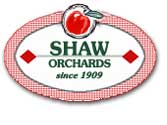I like the part of my job where I interact with customers. I enjoy listening to their “likes” and I sometimes press them to understand what we can do better. Many times during these conversations I get the question “what kind of fruit tree can I plant in my own property?” Or sometimes, it is the more direct person who seeks me out to understand why a tree isn’t producing.
I had a conversation like this with a customer earlier in the week. The family was enjoying some (very) late season blueberry picking, and wanted to know what kind of fruit trees they should plant on their half acre.
My response was “anything but apples.” Most people have no idea how much work it takes to bring a high quality apple to market. Other blog posts have described the pruning, thinning, and most of all, constant fight against diseases and insects. The kind of apple trees that we grow today are not found anywhere in nature: they have been bred by people over hundreds of years for their ability to produce large tasty fruit, and not to survive untended in nature. It is like comparing a friendly beagle to a wild wolf. One of those can survive in nature, and the other won’t.
The cynic will think that my advice here is self-serving. And it is, but not for the reasons you’d think. Honestly, I wouldn’t miss the business from any single customer who decides to plant his own trees. But untended fruit trees are huge vectors for disease and pests.
Consider the case of the plum pox virus several years ago in Adams County. Out of nowhere, this virus arrived from Europe and threatened to completely destroy the peach industry in the mid-Atlantic. There is no defence against the virus. The Department of Agriculture worked quickly with local extension and growers to quarantine the area and destroy any trees that MAY have been infected. Many acres of trees were simply pushed out and burned. The good news is that this quick action actually worked and we are now free of the virus.
But what if every other house had a peach tree? Would each of those homeowners be so quick to comply with destruction requests? California teaches us that the answer is no. They recently failed to stop a new pest (the citrus psyllid) that was initially found in backyard trees and moved quickly between backyard hosts. The bug now is a major threat to California citrus.
So my advice is simple: unless you are willing to sign up for the great amount of care that fruit trees need, you shouldn’t raise them. At best you’ll get mediocre fruit (probably good applesauce material), and at worst, you’ll put commercial growers at risk.
There are some great natural alternatives. One of these I suggested to my new friend this week: the American Persimmon. OK, a persimmon doesn’t taste like peach, but God put it here in this part of the world, and it will grow without a lot of fuss. Our colonial ancestors thought very highly of this native plant and frequently planted them near their homes. They are now rather hard to find, and could use a little help from people. Picked late enough in the season, they are sweet and juicy, and very good for you. And if you don’t get to them first, the deer will thank you too!

